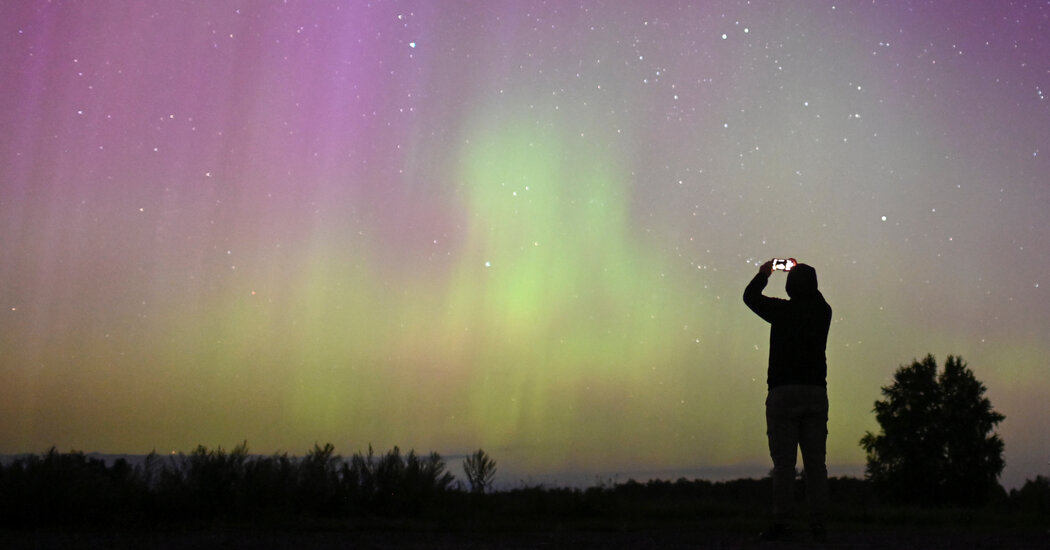Last August, over a calm Michigan lake, Karl Duesterhaus, 34, of Chicago, was treated to an unusual phenomenon: the northern lights, which appeared as hazy colors in a brighter-than-usual night sky. It was a cool experience, he said, but he was surprised when he looked at cellphone photos taken the night before.
“The colors were much more defined,” he said.
Mr. Duesterhaus isn’t the only one struck by the difference between the subtle colors that the naked eye registers and the vivid hues that appear in digital photos. Many travelers, some of them lured by those stunning images on social media, are also noticing the difference.
As the solar activity that causes the aurora borealis is expected to reach the peak of its 11-year cycle in the next year, opportunities to see it are booming via cruises, train trips and tours. According to the market research company Grand View Research, northern lights tourism generated $843 million in 2023 and is projected to grow at nearly 10 percent a year to 2030.
The Berkeley, Calif.-based tour company Wilderness Travel said bookings on its winter trip to Iceland — largely driven by northern lights seekers — have been up 130 percent each year on average since 2021. Demand for winter flights to Finland, a prime location for aurora-viewing, is up more than 70 percent this winter compared to last.
Winter hotel stays in coastal Tromso in northern Norway, a popular aurora destination, grew 7 percent since 2019 to more than 202,000 between January and April of 2024, according to Visit Norway. Last spring the Norway-based cruise line Hurtigruten appointed its first “chief aurora hunter,” the astronomer Tom Kerss, who will be on board its increasingly popular winter departures along the Norwegian coast.
Nature-centric travel, growing interest in astrotourism, and a greater understanding of how and when auroras occur has helped fuel the popularity of northern lights tourism. But so, too, say some aurora experts, have cellphone cameras, creating many of the colorful images appearing on social media, especially in the past year. So much so that at the Borealis Basecamp in Fairbanks, Alaska, a 40-cabin resort devoted to aurora viewing, management informs guests before they arrive of the gulf they may witness between the real life spectacle and some images. (The resort is sold out for the current fall-to-spring season.)
